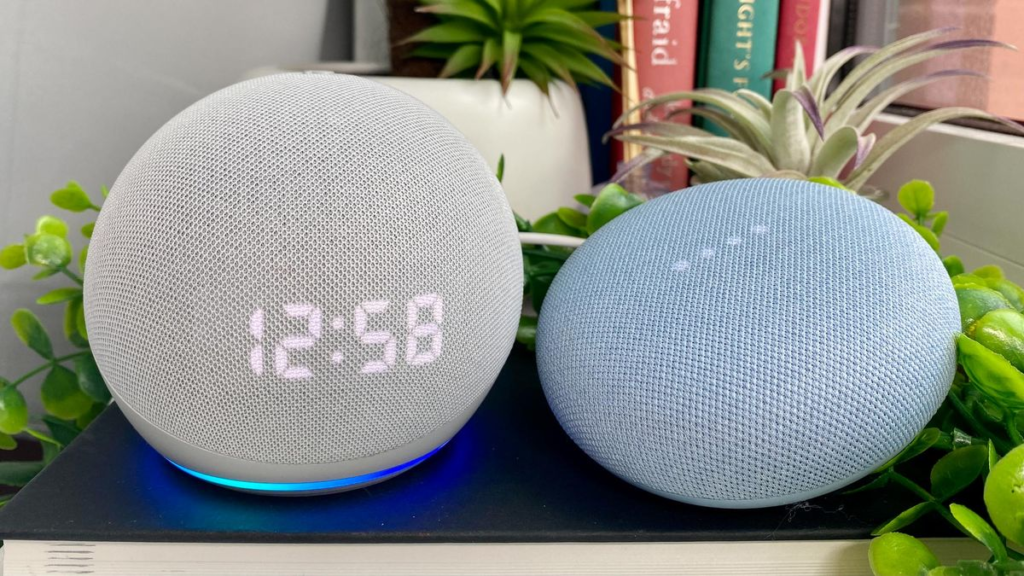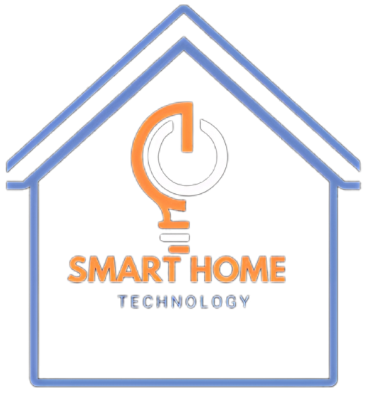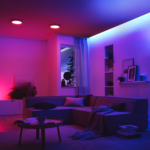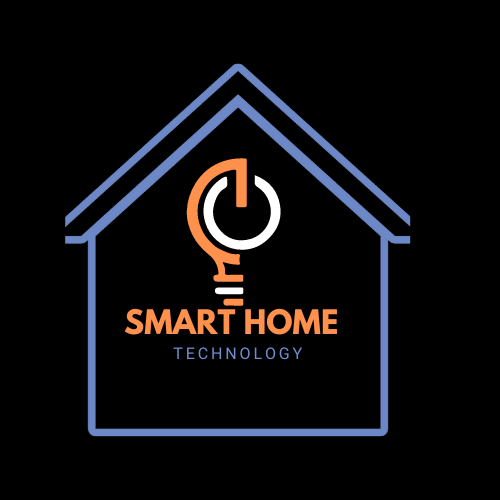wild—unless your smart home is there to help you. I used to dislike mornings (who doesn’t?), but creating a morning routine switched things up for me. So, when I say, ‘Good morning,’ my smart lights slowly brighten up (goodbye to those harsh overhead lights), my coffee maker starts brewing, and my smart assistant fills me in on the weather and news for the day.


Table of Contents
I’ve got this one little hack that I swear by! Get your routine in sync with your alarm clock. When my alarm rings, my smart speaker kicks in with some chill tunes, and my lights gradually brighten to feel like the sun is coming up. It’s like giving your brain a little spa day, and it’s way better than wandering around blindly.
If you’re commuting, consider throwing in some traffic updates and a little nudge to remember your lunch or umbrella. Seriously, it’ll keep you from freaking out at the last minute. Parents can use voice commands to wake the kids or play their favorite songs to get them up and moving. Mornings don’t have to be a drag—they can be pretty enjoyable.
Evening and Bedtime Routines
“Have you ever felt so tired yet still have many things to finish before you can sleep?” Set up bedtime routines. When I say ‘Goodnight,’ my smart home handles everything. The lights go low, the thermostat changes to a nice sleeping temperature, and my smart speaker plays white noise. It feels like magic.
What about the security features? They are a great help. I used to lie awake, wondering whether I had locked the front door. My routine checks this for me and locks it if I forget. Once, I left a window open by mistake, and my smart assistant alerted me. I now have complete peace of mind.
Pro tip: If you read or scroll before bed, set your routine to turn off the Wi-Fi or dim your bedside lamp at a specific time. This gentle reminder will help you go to bed. If you have kids, you can even program a “bedtime countdown” to make the transition smoother (and less dramatic).
Energy-Saving Smart Home Routines
“Let’s discuss money—smart homes aren’t just about convenience.” They can help you save a lot of money on your energy bills. My favorite routine? I say, “I’m leaving,” when I go to work. It switches off extra lights, lowers the temperature, and turns off devices like my TV and gaming console.
If you have a smart thermostat, you’ll enjoy it. Mine changes during the day depending on whether I’m home, and I hardly notice it. Last summer, it helped me save $50 monthly on cooling expenses. That’s not too bad.
Another suggestion: Create routines for each season. In winter, you can set your heating to start 30 minutes before you wake up, so it’s warm when you get out of bed. In summer, use voice commands to change your ceiling fans or shut your smart blinds to help you stay cool. These small changes make a difference and are also good for the environment.
Entertainment and Leisure Routines
“Movie nights are sacred in my household, and my smart home makes them unforgettable. I just say, ‘Let’s watch a movie,’ the lights dim, the TV turns on, and my soundbar automatically switches to surround mode. It’s like having your theater (without the overpriced popcorn).
If you enjoy music, you should make playlists that voice commands can control. I have one for cleaning (because, let’s face it, motivation is essential), one for dinner parties, and one for working out. All I have to say is, ‘Play my cleaning playlist,’ and scrubbing the floors becomes less unpleasant.
Gamers, this is for you: You can program your console to turn on, dim the lights, and adjust your monitor settings with a single phrase, such as ‘Game time.’ It’s incredibly satisfying. If you’re entertaining friends, set up a ‘party mode’ routine that syncs your lights to the music. Believe me, people will think you’re a tech genius.”
Safety and Security Routines
“Here’s a scenario no one wants: you’re lying in bed, wondering if the doors are locked or if the lights in the garage are still on. Smart security routines have put those worries behind us. My favorite command? “Goodnight, home.” It locks all the doors, turns off the downstairs lights, and sets the security system.
If you’re going on vacation, turn on ‘away mode.’ My lights turn on and off randomly to make it seem like someone is home. I have set up a routine that alerts me when my doorbell camera detects movement. Once, I saw a delivery person trying to hide my package behind a bush. That was a reasonable effort, friend.
Voice commands can help keep children safer in families. For example, “Lock the playroom” can keep dangerous tools or cleaning supplies safe. If you have pets, you can set up routines to check their cameras or turn on automatic feeders. It’s about using technology to make life simpler and safer.
Here are clear and detailed insights into each requested subtopic, including examples, helpful tips, and practical ideas for improving your smart home experience.
10 Must-Try Smart Home Voice Routines


Smart home voice routines are actions that start with just one voice command. They make daily tasks easier, increase security, and boost home efficiency. Here are 10 routines you should try:
- Good Morning Routine:
- Actions: Open blinds, adjust the thermostat to a comfortable temperature, read weather and news briefings, and start your favorite morning playlist.
- Example Command: “Hey Google, good morning.”
- Leaving Home Routine:
- Actions: Turn off lights, lower the thermostat, arm security systems, and ensure all appliances are off.
- Example Command: “Hey Google, I’m leaving.”
- Returning Home Routine:
- Actions: Unlock doors (if integrated with smart locks), turn on exterior and entryway lights, adjust climate control, and play relaxing music.
- Example Command: “Hey Google, I’m home.”
- Bedtime Routine:
- Actions: Dim lights, lock doors, set the alarm system, and play white noise or soft music for sleep.
- Example Command: “Hey Google, it’s bedtime.”
- Workout Routine:
- Actions: Turn on upbeat workout music, adjust lighting to energizing settings, and start a timer or fitness app.
- Example Command: “Hey Google, start my workout.”
- Cooking Routine:
- Actions: Activate kitchen-specific lights, set recipe timers, and play hands-free instructional videos or podcasts.
- Example Command: “Hey Google, I’m cooking.”
- Movie Night Routine:
- Actions: Dim or change lighting to a cinematic setting, turn on the TV and sound system, and close window shades for optimal viewing.
- Example Command: “Hey Google, movie night.”
- Focus/Work Routine:
- Actions: You can activate a quiet mode by silencing non-essential notifications, adjusting the lighting for concentration, and playing ambient background sounds.
- Example Command: “Hey Google, time to work.”
- Party Mode Routine:
- Actions: Sync smart speakers for multi-room audio, adjust colorful lighting, and, if available, trigger smart decorations.
- Example Command: “Hey Google, let’s party.”
- Emergency Routine:
- Actions: Activate all security cameras, alert emergency contacts, and flash exterior lights to deter intruders.
- Example Command: “Hey Google, emergency mode.”
You can customize each routine based on your devices, the routines in your smart home hub, and what you like. Try different triggers and actions to see what works best for you and fits your lifestyle.
Master Smart Home Automation Commands
Mastering automation commands is critical to fully realizing a smart home’s potential. These commands connect multiple devices and systems, making complicated tasks simple and understandable.
Essential Tips to Master Automation Commands:
- Understand Your Ecosystem:
Familiarize yourself with the app for your smart home hub (Google Home, Amazon Alexa, Apple HomeKit) to learn which commands are available and how devices interconnect. - Use Natural Language:
Voice assistants are designed for natural speech. Instead of memorizing rigid phrases, practice conversational commands like “Turn off all lights” or “Set the thermostat to 68 degrees.” - Combine Commands with Routines:
Integrate multiple actions into a single routine. For example, “Goodnight” might turn off lights, adjust the thermostat, and lock doors with a straightforward command. - Take Advantage of Schedules and Geofencing:
Many hubs allow you to combine voice commands with schedules or location-based triggers. Using geofenced commands can automatically run routines when you arrive or leave home. - Test and Iterate:
Experiment with new commands and adjust routines based on feedback. If a routine isn’t working as expected, review the sequence of actions and tweak the timings.
Advanced Commands to Try:
- Conditional Commands:
“If it’s after 9 PM, then dim the living room lights,” using supported conditional logic. - Multi-Device Integration:
“Turn on the hallway light and start the vacuum” to coordinate cleaning routines while ensuring safety. - Feedback Queries:
“What’s the status of my security system?” or “Is the garage door open?” to confirm actions.
Mastering these commands and understanding how devices interact allows you to streamline your daily routines and improve the functionality of your smart home.
Smart Home Entertainment Routines
Voice-controlled routines enhance the entertainment experience, transforming your home into a dynamic media center. These routines can be tailored to various scenarios, from casual listening to immersive home theater experiences.
Key Elements of Entertainment Routines:
- Media Control:
Combine voice commands to control multiple devices like smart TVs, soundbars, and streaming devices.
- Example: “Hey Google, play Stranger Things on Netflix,” which simultaneously turns on your TV and adjusts the sound system.
- Ambient Settings:
Set lighting and sound to complement the type of entertainment.
- Example: “Hey Google, set movie mode,” which dims the lights, adjusts the volume, and launches the streaming service.
- Multi-Room Audio:
Create routines that sync audio across different rooms.
- Example: “Hey Google, start party mode,” which plays a selected playlist across all connected speakers.
- Interactive Games and Trivia:
Engage voice assistants in interactive entertainment such as trivia games or storytelling.
- Example: “Hey Google, let’s play a trivia game.”
- Audiobooks and Podcasts:
Seamlessly transition between your preferred media formats.
- Example: “Hey Google, resume my audiobook,” or “Play the latest episode of my favorite podcast.”
Setting Up an Entertainment Routine:
- Define the Scenario: Decide if the routine is for a movie night, party, or relaxing evening.
- Select Devices: Choose which devices (TV, speakers, lighting) need to be activated.
- Create a Command Sequence: Using your smart home app, set up the sequence so that one command triggers all desired actions.
- Test and Refine: Adjust timings and device settings until the experience is seamless.
These entertainment routines enhance the watching and listening experience and, depending on your mood and activity, make the environment more engaging.
Best Voice Routines for Smart Lighting


Smart lighting is a key component of home automation, and using voice commands can dramatically alter the ambiance of your living space with little effort.
Voice Routine Ideas for Smart Lighting:
- Mood Lighting:
Create routines that adjust lighting based on your mood or activity.
- Example Command: “Hey Google, set romantic lighting. ” This will dim the lights to a warm hue and lower their brightness for a cozy atmosphere.
- Task Lighting:
Establish routines that set appropriate brightness levels and color temperatures for focused activities like reading or cooking.
- Example Command: “Hey Google, set bright white lights in the study.”
- Circadian Rhythm Support:
Mimic natural light patterns by adjusting lighting throughout the day to support your sleep cycle.
- Morning: Bright, energizing white light.
- Evening: Warm, dim lighting to promote relaxation.
- Example Command: “Hey Google, activate my day mode.”
- Event-Based Lighting:
Change lighting settings to celebrate special occasions or create a themed environment.
- Example: “Hey Google, start party mode” could initiate a sequence of dynamic, color-changing lights synced with music.
- Safety and Navigation:
Use lighting to enhance safety by illuminating pathways during nighttime routines.
- Example Command: “Hey Google, turn on hallway lights,” ensuring safe movement when returning home late.
Best Practices:
- Sync with Other Devices:
Integrate smart lighting with sensors or door locks. For example, motion sensors could trigger a routine that turns on hallway lights when someone enters a room. - Use Scheduling:
Automate lighting changes based on time-of-day or sunset/sunrise triggers. - Customize Scenes:
Most smart lighting systems allow you to create and save custom scenes, which can then be activated via a single voice command.
Leveraging these routines can effortlessly alter your environment, allowing you to adapt to any moment, from focused work sessions to festive gatherings.
Save Energy with Smart Home Routines
Energy efficiency is one of the main advantages of smart home technology. Using voice commands to control energy use can help lower your utility bills and support a more environmentally friendly way of living.
Energy-Saving Routine Strategies:
- Automated Lighting Controls:
Ensure lights are turned off when not in use.
- Example: “Hey Google, turn off all lights,” or schedule lights to automatically switch off at bedtime.
- Thermostat Optimization:
Integrate voice commands with your smart thermostat to adjust temperatures based on occupancy.
- An Example Command is: “Hey Google, set the thermostat to eco mode,” which might lower heating or cooling when the house is empty.
- Appliance Management:
Control appliances with smart plugs to reduce standby power consumption.
- Example: “Hey Google, turn off the living room TV,” or create routines that shut down non-essential devices during peak hours.
- Scheduled Power-Downs:
Create routines that automatically turn off or reduce power usage in certain zones.
- Example: “Hey Google, initiate night mode,” which could dim lights, power down entertainment systems, and activate energy-saving settings on connected devices.
- Integration with Energy Monitoring:
Pair your smart routines with energy monitoring tools that provide real-time data, helping you adjust usage patterns.
- Example: Use voice commands to query energy consumption stats: “Hey Google, how much energy did we save today?”
Implementation Tips:
- Customize Based on Occupancy:
Use motion sensors or geofencing to trigger energy-saving routines only when areas are unoccupied. - Leverage Routines for Daily Habits:
Integrate energy-saving commands into your daily routines (e.g., leaving home, bedtime) so that efficiency becomes automatic. - Review and Adjust:
Regularly review energy consumption reports from your smart home system and refine your routines for optimal performance.
Practicing these energy-saving habits can lower one’s carbon footprint and, in the long run, save money on utility bills.
“Smart home routines are more than just cool tech; they help make life easier.” Using voice commands can make your mornings easier, help save energy, and keep your home safe. Begin with one or two routines you can personalize for yourself, then gradually expand from there. Soon, you’ll wonder how you ever lived without them. Are you ready to make your home a smart home? Begin your day with a simple “Good morning” routine, and see where it leads you.
Conclusion
Voice commands are more than just a fun feature—they’re a way to enhance your everyday life. From making mornings more straightforward to ensure your home feels secure at night, these routines are handy and make a difference. What’s the best part? They can be completely tailored to fit your life. Begin with just one or two routines, and see how much smoother (and more enjoyable) life becomes. Excited to discover what your home can do? Begin your day with a cheerful ‘Good morning’ routine and take it from there. I’d love to hear which one you decide to try first!
FAQs
Can I use voice commands without a smart speaker?
Yes! Many smartphones have built-in voice assistants like Siri or Google Assistant.
What happens if my Wi-Fi goes out?
Most routines won’t work, but some devices with offline capabilities (like smart locks) can still function.
How many devices can I control with one voice command?
It depends on your setup, but most systems can control multiple devices as long as they’re part of the same routine.
Do brilliant routines work with different brands of devices?
Yes, but make sure they’re compatible with your smart assistant or use a hub like SmartThings.
Are smart home routines secure?
As long as you use strong passwords and update your devices, they’re generally safe.
What devices do I need to set up voice routines?
You’ll need a smart speaker or assistant (like Alexa, Google Home, or Siri) and compatible smart devices like plugs, lights, or thermostats.
Can I set routines for specific times without saying a command?
Yes! Most smart assistants let you schedule routines based on the time of day.
How can I ensure my routines are secure?
Use strong passwords for your accounts, enable two-factor authentication, and regularly update firmware on your devices.
What’s the most straightforward routine to set up for beginners?
Start with a simple morning routine that turns on the lights and gives you a weather update.
Can routines work if I have multiple voice assistants?
Yes, but you’ll need to ensure each assistant has its own devices to control and avoid overlap.



